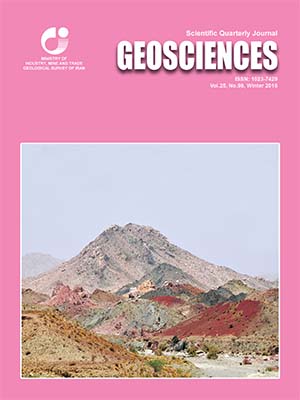Document Type : Original Research Paper
Authors
1 Ph.D. Student, Department of Geology, Faculty of Science, Birjand University, Birjand, Iran
2 Professor, Department of Geology, Faculty of Science, Birjand University, Birjand, Iran
3 Associate Professor, Department of Geology, Tarbiat Modares University, Tehran, Iran
Abstract
Fracture intensity-controlling factors, which include folding mechanism, lithology and thickness of layers, have been investigated in the Asmari Formation of the Kuh-e- Asmari using field studies and satellite images. Parameters such as structural position, spacing and vertical extension of the fractures in the limestone and argillaceous limestone units of different thicknesses in the Asmari Formation sequence in Kuh-e Asmari anticline were studied. The existence of large amounts of low-strength and high-porous clay minerals in the argillaceous limestone has resulted in the overall low strength of the rock, which eventually led to lower intensity of fractures in argillaceous limestone than of that in limestone. Variations in the fracture intensitiesin these two rock types showed that the thickness of the units does not much affect the fracture intensity. Hinge-parallel and hinge-perpendicular fractures resulted from flexural-slip folding and outer-arc extension in the hinge area of the fold exhibit the largest development, and exert the highest effect on wellbore instabilities. Results show that the maximum fracture intensity is in the hinge area of the fold, and that folding mechanism is the most important factor in controlling the intensity of the fractures.
Keywords

